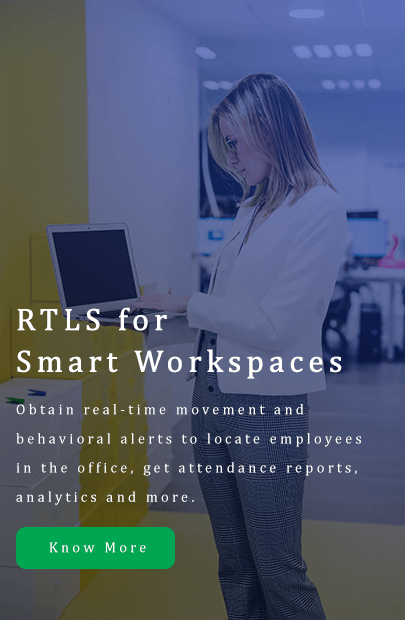The integration of Real-Time Location Systems (RTLS) technology in healthcare facilities has been a trending topic lately. The RTLS technology can help hospitals and clinics keep track of their resources and achieve optimum optimization in their work process. In addition to these, patient tracking using location solutions, especially connected wearables, are being practiced in some major facilities.
As online data suggests, the RTLS market for healthcare is expected to attain USD 3.9 billion by 2025. These impressive numbers are due to the latest technological innovation in the location intelligence sphere. As technologies like UWB enable precise and real-time location monitoring features, more organizations are actively adopting RTLS solutions to boost their productivity.
Check out the article for a deeper understanding of the global RTLS market for the health industry.
The Scope of RTLS in the Healthcare Sector
- Healthcare facilities across the globe are looking for solutions to scale the efficiency of their service offerings but also cut down the costs at the same time. The alarming staff shortages will add extra pressure to the healthcare providers as they try to streamline operations. WHO has predicted the worldwide staff shortage to reach 14 million by 2030
- In this situation, healthcare providers are looking for tools to help them optimize their existing resources. As a result, they are looking at RTLS-based solutions to facilitate real-time asset management. Wearables offering location information are too being increasingly used in health facilities
- The recent online reports suggest higher traction of location intelligence solutions in healthcare. 96% of healthcare providers are planning to expand the use case of RTLS technology to effectively monitor patients throughout the treatment. According to the worldwide data, 95% of healthcare facilities are looking forward to using the location technology to manage medical equipment, specimens, and supplies and around 83% will be using this innovation to optimize their workflows
RTLS for Healthcare-Examining the Effect of the Pandemic on the Technology
The Covid-19 pandemic threw a curveball at many business sectors, creating a large-scale panic during its peak period. Many sectors saw a gradual decline in their production value during this time. The RTLS market for healthcare too was severely affected by the pandemic. One of the main reasons for the market decline during 2020-2021 was that the healthcare industry allocated a majority of its funds to purchase resources and equipment to tackle the pandemic. The RTLS solutions were not considered essential equipment to tackle the situation back then. Also, the spread of the virus scaled-down the supply chain efficiency of the location market for healthcare, bringing down its manufacturing and installation rates.
UWB-based RTLS Solutions – Driving More Adoption Across the Health Sector
The integration of the Ultra-Wideband (UWB) technology in the location intelligence has sparked more adoption of RTLS solutions for healthcare. One of the best features of UWB technology is that it offers highly accurate positioning data compared to other location technologies. In addition to this, UWB-based RTLS products come with lower power consumption, giving them an edge over other latest technologies. UWB-based location solutions help healthcare facilities effectively track their resources, allowing them to optimize their operations and activities. The Ultra-Wideband technology has enabled precise location monitoring of patients and equipment for hospitals, allowing them to pinpoint resource location up to an accuracy of 10cm.
The UWB solutions had witnessed some decline in its installation costs. This has again boosted its acceptance rates among various verticals. UWB-based RTLS solutions are now being favored over RFID and Wi-Fi by many healthcare facilities. Monitoring using this technology has enabled hospitals to track patients, staff, and equipment in real-time and deploy geofences to manage asset movement.
Future of RTLS Market for the Health Industry

The RTLS solutions are predicted to witness higher traction in the developing regions, especially the APAC. The unexplored marketing opportunities and constantly growing customer awareness have tipped the adoption curve in this region. The use of RTLS in healthcare, especially in Japan, China, Australia, and Singapore is evolving rapidly. In the APAC area, the health sector has higher adoption rates of RTLS solutions with Wi-Fi technology, as they try to scale down the installation costs by utilizing the already existing infrastructure. The Japanese and the Chinese health sectors are estimated to become the successful ground for RTLS solutions. There is a high demand for real-time patient tracking in these specific health spaces.
As the data suggests, things are looking good for the RTLS market in healthcare. With the right combination of technology and innovation, the market will reach new heights in the coming years.







